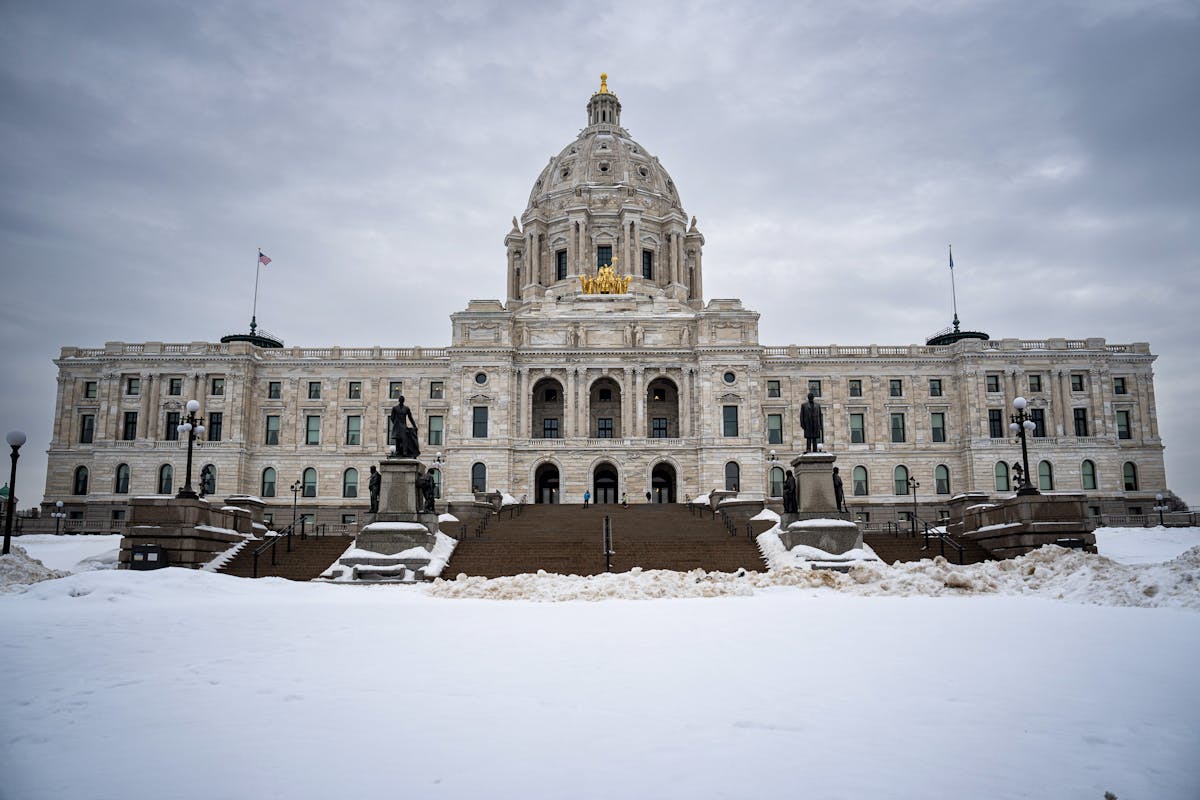Amber Lightfeather makes just enough money that her four children don't qualify for free lunch at school. But the $231 the Duluth mom estimates she pays out-of-pocket for those meals every month still makes a noticeable impact on the family finances.
"It makes it really tough to budget," Lightfeather told the House Education Policy Committee on Wednesday.
Such families — those who don't qualify for free or reduced-price meals but still face staggering grocery bills relative to their take-home pay — are who Rep. Sydney Jordan, DFL-Minneapolis, had in mind when she drafted House File 5.
If passed, the bill would require the Minnesota Department of Education to reimburse districts for the cost of serving lunch and breakfast to all students regardless of their family's income. The legislation would effectively reinstate a popular federal program that paid for school meals.
According to school nutrition advocacy group Hunger Solutions, one in six students in Minnesota experience food insecurity. And 25% of them live in a household that doesn't qualify for free or reduced-price meals.
"Minnesota is a state that values education and wants to see every child succeed, but that is not possible when one in six students are trying to learn on an empty stomach," Jordan said in a statement. "Now is the time for our state to step up and provide the food security families need and the education our students deserve."
The legislation as written does not include a price tag but it's estimated that universal school meals would cost the state about $180 million per year. Supporters have advocated for the state to use a portion of the $17.6 billion surplus to foot the bill.
Gov. Tim Walz has said universal school meals are among his top priorities for this legislative session.
"We will pass universal meals to ensure every student is given something to eat and no child has to worry about the color of their lunch ticket," Walz said in his inaugural address.
If the bill passes, Minnesota would be the third state following California and Maine to pay for every student's meals. In Massachusetts, Nevada and Vermont, the state will foot the bill for school meals through the end of this academic year. There are active campaigns for similar legislation in Wisconsin, North Carolina, New York and Maryland, the Associated Press reports.
Prior to the pandemic, families whose income fell below 130% of federal poverty guidelines qualified for free meals. Families earning less than 185% qualified for reduced-price meals.
The Department of Agriculture waived those income requirements from March 2020 until September 2022 and fully reimbursed districts for the meals they served. Parents and advocates say the pandemic-era policy provided a lifeline for families, particularly those on the bubble who made too much money to qualify for free and reduced-price meals but still struggled to keep up with the rising costs of basic necessities.
A Minneapolis student who testified in front of the House Education Policy Committee and identified himself as Will L. said his mother emptied her Cash App balance so he could buy lunch at school Wednesday.
"She has to choose between a meal for herself and a meal for me," he said.
Hunger Solutions Minnesota Policy Director Leah Gardner said food pantries across the state registered 2 million more visits in 2022 than 2020's record 3.4 million.
"With food prices being up and a lot of temporary pandemic relief going away, we are seeing more food insecurity now than ever before during the pandemic," she said in an interview.
Schools have long been required to provide meals to all students. Previously, districts were allowed to provide alternative lunches to students with unpaid lunch debt.
In response to a decision from Attorney General Keith Ellison that banned "lunch shaming," districts stepped back from that practice in late November.
The discontinuation of the federal free meals program also put a crunch on some school districts. Last April, the Anoka-Hennepin school board voted to raise the price of its breakfast and lunch offerings to head off increasing costs.
Supporters of free school meals say providing breakfast and lunch helps students pay attention and perform better academically. In criticizing Congress for allowing the federal meals program to lapse, The American Heart Association said "providing healthy school meals for all students is a recipe for success that reduces food insecurity, improves children's diets and academic performance, generates critical revenue for schools and decreases stigma."
Adosh Unni, director of government relations at the Minnesota Department of Education, similarly told the House Education Policy committee that feeding students "is a fundamental component in educating the whole child."
The bill faced little opposition among members of the Education Policy Committee, although some Republicans protested its lack of financial scaling based on need which would mean wealthy families would receive the same benefits as those with low incomes.
That's why Rep. Peggy Bennett, R-Albert Lea, signaled she would vote against referring the bill to the House Education Finance Committee.
"It's not because I don't care about kids who are hungry — we want students whose families cannot afford to feed them to have lunch. Rather, this is a shotgun technique instead of surgical approach," the retired educator said.
The House Education Policy Committee voted to refer the bill to the House Education Finance Committee, which will discuss it Thursday.
Former DFL Senate Majority Leader Kari Dziedzic dies of cancer at age 62

How the Star Tribune is covering the 2024 election

Fact check: Walz and Vance made questionable claims during only VP debate

In Tim Walz's home city, opposing groups watch him debate on the national stage

